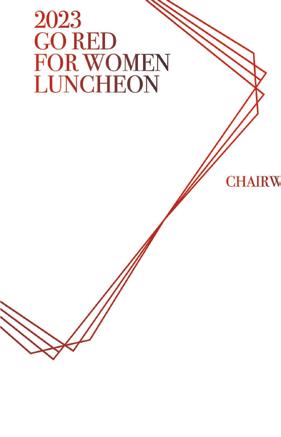
7 minute read
WANTED 3 Billion Tons of Minerals and Metals
By Dimitra Lavrakas
President Joe Biden signed the $369 billion Inflation Reduction Act (IRA) last August, in part to invest in climate change solutions. It holds substantial significance for Alaska.
The World Bank estimates that more than 3 billion tons of minerals and metals will be needed to deploy wind, solar, and geothermal power and energy storage to hold global warming below 2°C above pre-industrial levels—the goal of the 2015 Paris Agreement. Readmitting the United States into the climate accords, after the Trump administration gave notice of withdrawal in 2017, was one of President Joe Biden’s first acts as president in 2021.
US industries developing green energy technologies must import critical minerals unless and until domestic sources are available. To that end, the IRA offers tax credits and direct funding for mining companies across the country. Some of those provisions hold the potential to bring Alaska a new mineral rush.
The IRA includes a tax credit for the domestic manufacture of “eligible components.” This includes the elements neodymium, dysprosium, and praseodymium—rare earth elements (REE) that are essential for the energy transition because of their use in permanent magnets for wind turbines and electric vehicles (EVs).
The tax credit covers up to 10 percent of manufacturers’ cost of production as an incentive to attract companies to start mining. For established mines it could boost their productivity.

For example, the United States has significant lithium resources; the US Geological Survey (USGS) estimates 3.6 percent of global reserves. However, the only domestic lithium producer is in Nevada, so the country imports most of its lithium.
USGS also reported that in 2021 the United States imported 78 percent of its REE from China. The IRA aims to change that.
Defense Production Act
One provision of the IRA steers $500 million authorized by the Defense Production Act. In June 2022, Biden invoked the Defense Production Act to boost manufacturing of certain technologies essential for decarbonization of energy, such as solar panels, heat pumps, and transformers for the electrical grid, as well as the minerals needed to make them, particularly large-scale batteries.
A press release from the US Department of Energy explained, “Demand for clean energy technologies such as solar panels, heat pumps, and electrolyzers for hydrogen has increased significantly as the costs of these technologies have plummeted over the last decade.”
“As the world transitions to a clean energy economy, global demand for these essential products and components is set to skyrocket by 400 to 600 percent over the next several decades,” says a White House press statement. “Unless the United States expands new manufacturing, processing, and installation capacity, we will be forced to continue to rely on clean energy imports—exposing the nation to supply chain vulnerabilities, while simultaneously missing out on the enormous job opportunities
Dimitra Lavrakas
associated with the energy transition.”
An additional $40 million in loan guarantees is authorized in the IRA for projects that increase domestic production of critical minerals.
Alaska’s vast terrain holds forty-nine of the fifty critical minerals identified as necessary for the energy transition.
What’s in Alaska?
The most promising prospect for rare earth mining in Alaska is on Prince of Wales Island, just west of Ketchikan, where the Canadian company Ucore Rare Metals is developing the BokanDotson Ridge Zone.
“Ucore continues to advance its Bokan project as a long-range heavy rare earth source to eventually complement the planned Western feedstock sources for its near-term Strategic Metals Complexes,” Ucore Vice President and COO Michael Schrider stated in an October news release. “North America desperately needs independent mineral resources to transition to a green energy future centered on electric vehicles and renewable energy sources—both of which are more achievable with the heavy rare earth elements provided at Bokan Mountain.”
In 2020, the Alaska Legislature authorized the Alaska Industrial Development and Export Authority (AIDEA) to issue bonds for up to $125 million to finance the infrastructure and construction costs of the Bokan REE project.
Ucore has scaled back its Alaska ambitions, postponing a processing facility that was to be built in Ketchikan, instead locating its first commercial-scale plant in Louisiana. But the company still has its eye on the mineral resource across Clarence Strait.
The company says 2022 field summer work, coupled with previous years’ successful drill programs, now positions the Bokan property closer to a feasibility study and allows Ucore to upgrade approximately 20 percent of the currently “indicated” mineral resource to a “measured” resource classification.
Farther north in the MatanuskaSusitna Borough, Australia-based Discovery Alaska Limited announced that its Chulitna Project shows a strong presence of lithium mineralization, based on examination of cores drilled by previous exploration. Its 2022 the historic drill core re-sampling program from the Coal Creek Lithium Prospect was part of Chulitna project.

A detailed work program of core logging, core cutting, core photography, core sampling, and laboratory analysis indicated significant broad intercepts of lithium-rich areas.
“The company is excited with the first-stage laboratory analysis results confirming significant broad zones of lithium mineralization at our Coal Creek prospect, with potential for strike and depth extensions,” Discovery Alaska Director Jerko Zuvela stated in an October news release. “These initial results provide encouragement for continued exploration works. We look forward to realizing the lithium potential.” Zuvela noted that the Coal
Creek prospect is strategically close to the Parks Highway and Alaska Railroad.
The Coal Creek Lithium Prospect is at the exploration stage, not at a feasibility or production level opportunity, according to the company. Discovery Alaska is not in a position now to consider the direct effect of the IRA on its decision to develop lithium in Alaska, but the company says it is considering additional potential project opportunities in the state.
No Success Without Access
No amount of incentives, in the IRA or otherwise, could make a mineral project affordable if the resource is stranded far from the market. Access is key, which is the reasoning behind major mining roads proposed in Alaska.
The Ambler Access project would connect a mining district east of Kotzebue with the Dalton Highway with a 211-mile industrial haul road. The district is a large prospective copper/ zinc mineral belt with extensive deposits of critical minerals and other elements essential to meet lower emissions outlined in the IRA.
“Because of the Inflation Reduction Act’s investments, America is on track to decrease greenhouse gas emissions by about 40 percent below 2005 levels in 2030—positioning America to meet President Biden’s climate goals of cutting greenhouse gasses at least in half in 2030 and reaching net zero by no later than 2050,” says Associate Director for Climate, Energy, Environment, and Science Candace Vahlsing with the US Office of Management and Budget.

But as these projects move along, some in the industry and those who advise mining companies and government agencies express frustration with the Biden administration over the permitting process. To wit, the US Department of Interior reversed course last March, suspending a right-of-way for the Ambler Access Project through Gates of the Arctic National Park.
Drue Pearce, a former president of the Alaska Senate and now director of government affairs for the law firm Holland & Hart in its Washington, DC office, called the reversal bewildering. The administration had already agreed in 2021 to a fifty-year right-of-way through a 25-mile corridor that would let AIDEA develop the road.
Furthermore, the Biden administration did not streamline the permitting process, Pearce says, pointing out that while the IRA holds out the promise of financial incentives for mining, it is difficult for some projects to reach final approval.
The right of way was granted based on a record of decision from the year before issued by the US Bureau of Land Management (BLM) and US Army Corps of Engineers following an exhaustive seven-year review process initiated under the Obama administration.
In the suspension notice, the Department of Interior determined that BLM did not appropriately evaluate the effects on subsistence uses along the route and did not adequately consult with Alaska Natives. However, the suspension does not identify any specific deficiencies or corrective action.
“There’s significant compliance for these projects,” says Holland & Hart partner Kyle Parker. “The real problem with investors is the years of delay.”
The IRA provides $7,500 tax credits against the purchase of a new allelectric vehicle, starting next year, but only for vehicles with batteries that contain at least 40 percent lithium, nickel, manganese, cobalt, or graphite produced domestically or from friendly countries. By 2027, the requirement rises to 80 percent.

Most cobalt used in the United States is imported from the Democratic Republic of Congo and would not meet the qualification for the EV tax credit.
The Ambler Mining District, though, could become a reliable domestic source of cobalt. Ambler Metals, a joint venture of South32 Limited and Trilogy Metals, is working to develop the district’s zinc and copper first, but cobalt could follow from the Bornite Deposit later in this decade.

Ambler Metals President and CEO Ramzi Fawaz says the IRA provision that lets mining companies write off 10 percent of operating costs for producing a single critical mineral is one factor in the decision. Whether the Ambler Access project is ever built is another.
The question is not whether Alaska contains the minerals to satisfy the IRA’s lofty goals for energy development but whether those minerals can be extracted.

“Alaska is one-fifth the size of the United States, with extensive mining. We are the mineral reserve for the United States,” says Parker. “Alaska can fill the need.”







February is the perfect month to contemplate the twin arts of architecture and engineering. The chill of winter inspires gratitude for shelter and the utilities that keep buildings cozy. This also happens to be the month for National Engineers Week. On that occasion, a banquet is being held February 25 in Anchorage to honor the field’s great contributors, such as Olga Stewart of Geosyntec Consultants, who was named Alaska Engineer of the Year in 2022.
The load-bearing core of this month’s architecture and engineering special section is, as usual, the new nominees for Engineer of the Year and the Engineering Excellence Awards. Six individuals received nominations from their professional organizations, while a bridge, a water supply, and two buildings are vying for recognition, as well.
Engineers who specialize in corrosion control get special attention in “Rust Never Sleeps.” Pros from Coffman Engineers and Michael Baker International contribute insights into the challenges of protecting Alaska pipelines and marine infrastructure from wasting away. In “Harp Across the Channel,” guest author Aaron Unterreiner of PND Engineers highlights a marvel designed by his firm’s co-founder. The O’Connell Bridge in Sitka, arguably the first cable-stayed bridge in the United States, was designated a historic civil landmark last fall.
Architects shine in “Top Shelf,” which lays the foundation for how an aging storefront in Downtown Anchorage was renovated into the buzzy restaurant Whisky & Ramen, a uniquely challenging project according to Determine Design. “The Usual Schematics” looks at why some floor plans seem to pop up all over the place, while “Designing for Place” reveals how uniqueness comes from attention to local and traditional inspirations.
Summer is when Alaskans appreciate nature, and winter is for appreciating the built environment and its designers. Even those who enjoy frolicking in the snow must retreat to a structure to warm up, so these pages are for those dreamers who thought up the structures in the first place.




